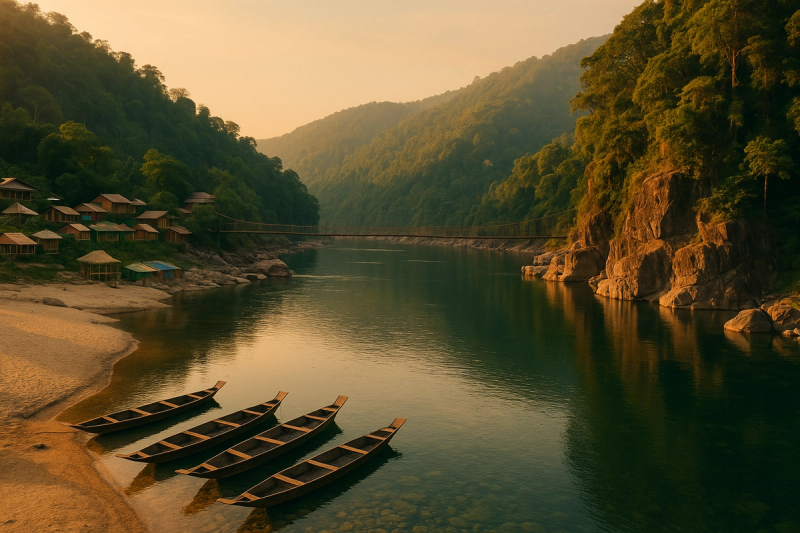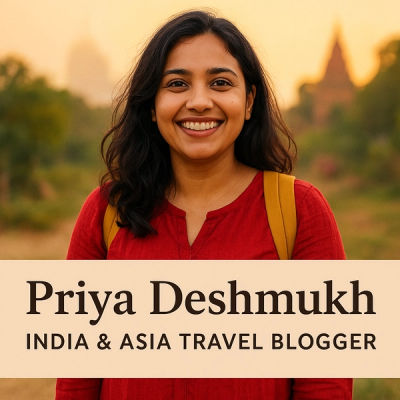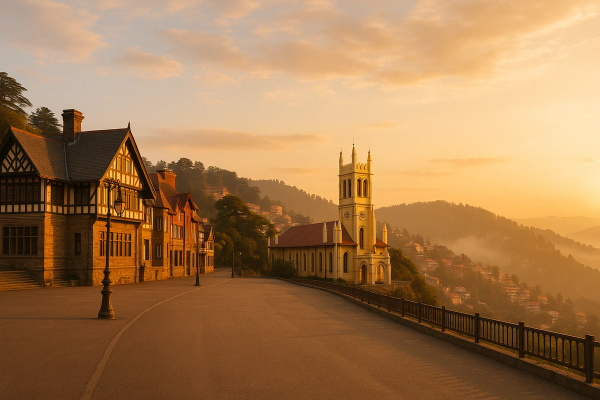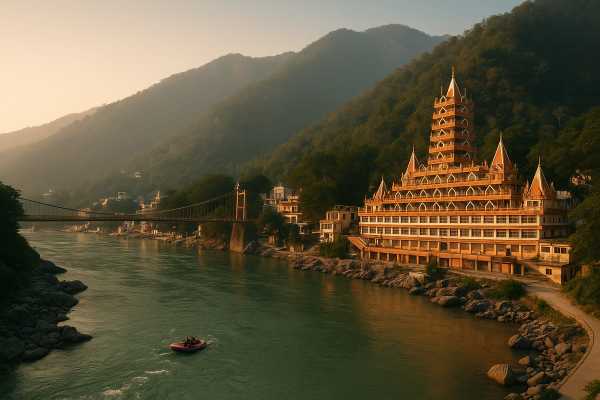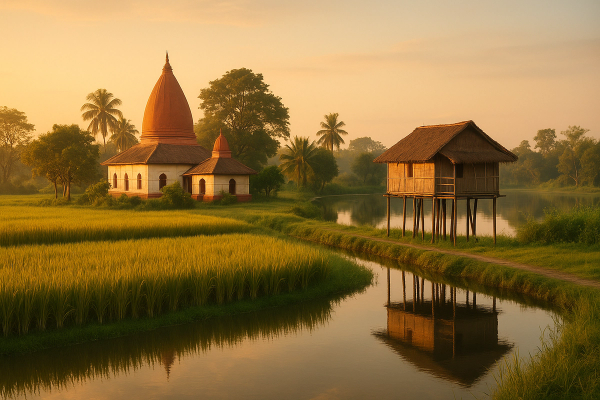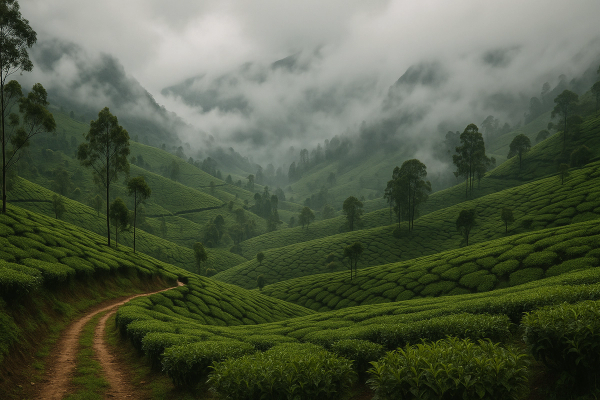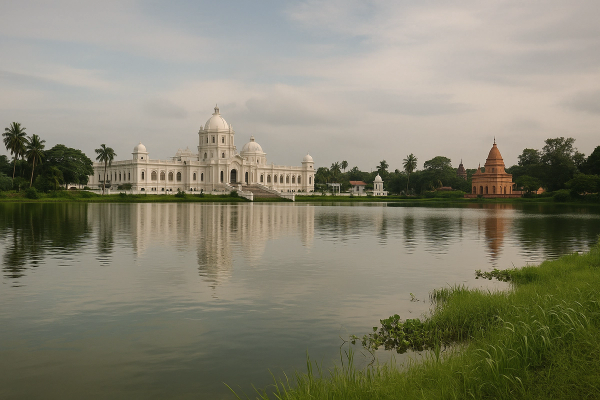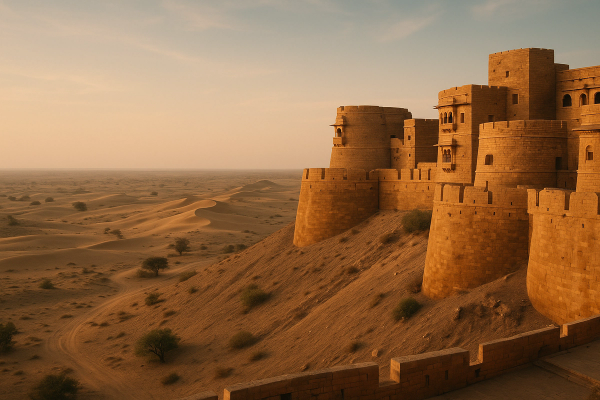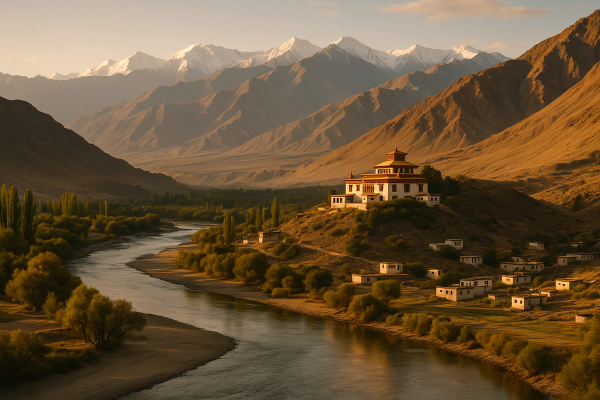Shnongpdeng, Meghalaya: River Camping & Cliff Jumps | Hidden Gem — the trip that finally made me breathe#
I’d been seeing those glassy-water photos of Dawki for years, you know, the ones where the boat looks like it’s floating on air, shadow and all. But lol, the real magic isn’t just Dawki town… it’s Shnongpdeng, this tiny riverside village a little further up along the Umngot. I went in with BIG expectations and somehow still got surprised. It’s calm, it’s green, it’s got that just-right mix of adventure and chill. And me and my friend — we camped by the river, jumped off a freaking cliff, zipped across the water, boated on water so clear you can literally count pebbles. It’s wild and somehow, very peaceful. Hidden gem isn’t just SEO, it’s true.¶
Where exactly is Shnongpdeng and why it’s different from Dawki#
Shnongpdeng sits in West Jaintia Hills, Meghalaya, about 8–10 km from Dawki town on the border with Bangladesh. The river is the same — Umngot — but the vibe’s softer. Dawki side gets busier with day-trippers, especially weekends and holidays. Shnongpdeng is more about camps, bamboo bridges, small homestays, and staying the night to hear the river’s quiet hum. Locals mostly speak Pnar (Jaintia) and Khasi, some Hindi, plenty English. Everybody smiles, points you right, and asks if you wore your life jacket (you should). For me it felt like the place that lets you be both lazy and slightly brave.¶
Getting there: Shillong to Dawki to Shnongpdeng (the real road story)#
We started from Shillong early because, honestly, the road has that twisty-hilly thing and fog can come out of nowhere. Private cab quoted around ₹3500–₹4500 return (depending on bargaining skills and how nicely you ask). Shared Sumo from Bara Bazar or Police Bazar towards Dawki is cheaper (₹250–₹350 one way), but timing can be weird and seats fill fast. Took us roughly 3 hours with a tea stop, then another 20 minutes to Shnongpdeng. The last bit is narrow, kinda bumpy, but scenic as heck. You’ll see the suspension bridge first — small, pretty, photo magnet. One quick note: network’s decent with Jio and Airtel, BSNL felt spotty. UPI works most days, but carry cash because riverside stalls and camps aren’t always 100% online. And please don’t try to drive at night if you’re not used to hill roads. Not worth it.¶
First look and vibe: bamboo, blue water, and that suspension bridge#
We reached just before lunch and walked onto the hanging bridge. Wind, water, silence, and a couple of boats sliding like dragonflies. No drama. The Umngot down there is insanely clear, especially on a good weather day. Dry season really shows it off. A few camps along the bank, colorful kayaks stacked, kids playing, aunty frying pakoras in a tiny stall. Everything feels smaller in Shnongpdeng, more intimate. Nobody shouts. You just… breathe. There’s a designated camping zone run by local operators — they keep it surprisingly tidy. Signs around about not littering, don’t use soaps in river, that sort of thing. It’s not perfect, but you can feel they care about the river.¶
River camping in Shnongpdeng: prices, facilities, and how comfy it really is#
So, camping. We took a 2-person tent right on the riverbank, slightly raised on a gravel patch. Operators offered options — simple dome tents or bigger family tents — with bedding, blankets, and those plastic ground sheets that do the job. Prices hovered around ₹800–₹1500 per person for a tent setup including breakfast, depending on size and season. Firewood for bonfire was extra (₹100–₹300 kind of range), and there’s usually a charge for barbecue grill if you want. Toilets? Not luxury, but clean enough. Some western, some Indian style. Water was available. There’s power in the evening in most camps, but don’t expect full-on charging points like a hostel. Also, please don’t blast music late. Locals request quiet by 10 pm, and honestly the river sounds better than any playlist.¶
Cliff jumps: how high, how scary, and should you actually do it#
The cliff jumps are the adrenaline highlight. There are a few ledges people use — roughly 10–12 ft, 20 ft, and a bigger one going above 30 ft depending on water level and season. Guides or boat guys will point you to the safe spots. My first jump was the mid one, and I swear my legs refused at the edge. That stomach drop… then splash… then silence. Life jackets were non-negotiable for us — and the local folks insist. Thank them. River currents can change quickly. Don’t jump if the water’s murky or if operators say no that day. You can hurt yourself if you don’t land straight. Keep arms tight, legs together, no fancy flips unless you’re trained. It’s free if you find the right spot, but best to tip your guide, and go with someone who knows the river.¶
Zipline, kayaking, and boating — fun, safe, and very Instagram-able#
We did the zipline across the river and it’s honestly a thrill. Rates we were quoted ranged from ₹400 to ₹800 per person depending on the operator and length — updated boards near the bridge show current prices. Harness and helmet were provided, and they double-check your buckles. Kayaking was around ₹500–₹700 for 30–45 minutes, life jackets again compulsory. Boating is the classic Dawki/Shnongpdeng thing — wooden boats, gentle gliding, pebbles visible like someone polished the river. Prices are per boat more often: ₹800–₹1200 for a short ride and ₹1500–₹2000 for longer ones. We took a long one close to golden hour and the photos looked fake. If you’re like me who gets motion-sick sometimes, don’t worry — it’s calm most days. Unless, of course, monsoon mood swings.¶
Best time to visit: seasons that make the river look unreal#
If you want that glass-clear water, aim for November to April. October can be good too if rains behave. Monsoon (June to early September) is crazy green and atmospheric but water turns strong and often silty, so boating/jumping might be limited or paused. Nights in Dec–Jan get nippy, so carry layers. Weekdays are way better than weekends — fewer people, more peace. There’s occasionally a river or adventure festival around Dawki–Shnongpdeng zone, dates vary year to year. If you care about crowds and want photos without heads popping in, go early morning. Sunrise lines the valley with this soft honey light, and the water acts like glass. I had to pinch myself. Twice.¶
Food scene: simple plates, Khasi-Jaintia flavors, and that perfect chai#
You won’t find fancy Continental cafés here. Which is good. Expect rice plates, dal, egg curry, smoked pork, bamboo shoot prep, sometimes fish depending on availability. I had jadoh (rice cooked with meat) and doh-neiiong (pork with black sesame) at a small family-run joint — tender, smoky, not too spicy, full of that home flavor. There’s Maggi, omelette, momos, tea stalls, fruit sellers, but order early because cooks sleep early. Veg options are there, just ask. Prices were reasonable — ₹80–₹200 for basic plates, ₹250–₹350 for meat meals. Keep snacks and water handy, though. And yes, don’t drink from the river directly even if it looks clean. We bought bottled water and refilled reusable bottles at the camps.¶
Latest updates & safety: what’s changing and what locals request#
Stuff to know now: most operators strongly enforce life jackets for kayaking/boating/jumps, which is good. Some camps ask for a small security deposit or advance to reserve tents, and many accept UPI, but carry cash because network goes off randomly. Parking fees might apply near the bridge or camp zone (₹50–₹100). Roadworks happen on and off, so give yourself buffer time while driving to Shillong. In monsoon, landslides can cause delays. No special permits needed for Indians to visit Meghalaya, by the way. Foreign travelers also don’t need ILP here, but keep ID proof handy. The community is quite protective of the river now — requests for no littering, no shampoo/soap in water, and please don’t fly drones over people without asking. As of early 2025, prices haven’t spiked crazily, but still, double-check locally on arrival.¶
Staying options around Shnongpdeng: camps vs homestays vs quick hotel nights#
If you’re staying by the river, camps are the vibe. For families or folks who want a real bed, there are homestays in Shnongpdeng and Dawki with rooms roughly ₹1500–₹3000 per night, sometimes including breakfast. Basic, clean, genuinely warm hospitality. Shillong has tons of boutique stays if you want to base there and do a day trip, but honestly staying riverside was the highlight for me. Wi-Fi? Ehh, don’t depend on it in Shnongpdeng. Power is fine in evenings, but keep a powerbank. Hot showers are not guaranteed, but many homestays will arrange a bucket or geyser if they have it. Ask early. Also, book ahead on long weekends. I saw a couple groups turned away because everything filled up.¶
Lesser-known places near Shnongpdeng you should not skip#
Okay so most people just do Dawki market and Shnongpdeng river, done. But if you’ve got time, check Krang Suri Waterfall (near Jowai) — unreal blue pool, safe zones marked, life jackets on rent, small entry fee. There’s Phe Phe Falls too, and Nartiang Monoliths if you want a history fix and giant stone vibes. Darrang village right across the river is quieter with more camping spots, fewer crowds. I took a morning walk there and it felt like a postcard, simple homes, farm patches, river whisper. If you’re pushing further, Jowai has local markets and those nice roadside stalls selling oranges and bananas that taste better than city ones for some reason.¶
What I actually spent (and where I got scammed… okay not scammed, just clueless)#
My rough budget for two days and one night in Shnongpdeng: transport from Shillong in shared Sumo ₹700 total for two people, private boat ₹1500 for long ride, zipline ₹600 each, kayaking ₹500, camping ₹1200 per person including breakfast, food and tea stalls ₹600–₹800 total, misc fees and snacks ₹300–₹500. We paid ₹100 for parking near the bridge. One stall charged us ₹50 extra for "environment" something… not official, I think, but I didn’t argue. It wasn’t a lot, and we probably used their seating anyway. Pro tip: always ask prices nicely in advance, and if you feel overcharged, smile, say thank you, and check the next stall. No need to fight. People are helpful if you’re polite.¶
My cliff jump moment: not gonna lie, I panicked, then I flew#
We stood at this mid-height ledge, guide in slippers grinning at us like it’s a daily joke, me shaking like an uncharged phone. Water was so clear you could see rocks down there, which is both nice and terrifying. Guide explained where to aim, how to hold arms tight, legs straight, no hesitating mid-air. Me and him went — my friend went first actually, screamed, splash, came up laughing. And I thought, okay now or never. Heart in throat. I jumped. Drop felt longer than it was, hit the water, cold shock, then pure quiet. Came up and the world went soft for 10 seconds. I wouldn’t say I’m brave, but I want that feeling again. Not gonna pretend I didn’t think of backing out. But I did it.¶
Responsible travel things nobody tells you but locals care about#
Pack out your trash. Even small stuff like cigarette filters and chocolate wrappers. Don’t shampoo or use soap in river, please — it’s not a bathtub. No booze-floating or loud parties at night, people live here. Ask before flying drones or taking close-up photos of folks. Dress modest if you’re jumping — no need to show off, and you might lose loose clothing anyway. Wear shoes or sandals with grip, rocks are slippery. If you see someone in trouble in water, call the nearest guide rather than trying some hero move. Also, don’t argue pricing endlessly — these are community-run activities, and they keep costs reasonable. Tip if you had a good time. It goes back to the same people who maintain the place.¶
Trending now: day trips are back, but overnight wins#
Lot of people do just a quick reel-friendly boating session and bounce back to Shillong by evening. Nothing wrong with that, but staying the night changes everything. Stars reflect on the river, campfires feel warmer, conversations with locals go from small talk to real stories. Weekend crowds build up by late morning — if you arrive early, you get the best calm. This season I noticed more folks trying kayaking and zipline than earlier, and tents got booked out by 11 am. Book in advance if your dates are fixed. Otherwise, reach by 9, talk directly to operators under the bridge, and you’ll probably get a fair spot. Honestly, waking up riverside is the best part. You hear birds, not traffic.¶
Packing list that actually helped me (and one dumb thing I forgot)#
What worked: quick-dry towel, warm layer for night, water-resistant shoes or sandals, flip flops, powerbank, headlamp or torch, reusable water bottle, swim shorts, light rain jacket, cash (₹1000–₹2000 in change), snacks, small first-aid. Sunscreen + cap if you’re pale-brown like me and burn surprisingly in mountain sun. What I forgot: a plastic bag for wet clothes. Don’t be me. Also, carry a second set of everything because you will get wet. Phone in a zip pouch, and if you can, leave extra gear at camp while you jump/boat. Lockers aren’t common. Keep it simple.¶
Local culture vibes: smile, greet, and let the river slow you down#
People in Shnongpdeng are chill but observant. A simple hello gets you a grin and directions. I had a long chat with a boatman about how the river looks clearer certain mornings and gets greener in evenings. He said they’ve been careful about tourists not turning the place into a carnival. It’s still their home first. So yeah — don’t try to bargain someone down to peanuts. Most rates are already fair. Try local dishes, ask about the area, buy fruits from the small stalls. Tiny acts matter. They reminded me not everything needs to be rushed or optimized. Sit by the water. Eat slowly. Skip one Instagram story and just watch the light change on the pebbles.¶
Weather and river conditions: do not underestimate monsoon mood swings#
Meghalaya rains when it wants, and sometimes when you don’t want. If clouds gather fast, even in shoulder months, activities might pause. Operators usually know when to stop — listen to them. River level can rise after upstream showers. If you’re here in peak monsoon, you might not see the famous clarity, but you will see a rainforest come alive. Road closures do happen — check local updates in Shillong before starting. If you’re self-driving, keep an eye on landslide alerts and don’t overspeed. Potholes appear like surprise tests. And yeah, fog can reduce visibility badly in evenings. I’m not trying to scare you; it’s just mountain reality. Better safe than sorry, as our moms say.¶
Family-friendly or backpacker-only? Honestly, both — just plan right#
I saw families with kids doing the short boat rides in life jackets and enjoying riverside picnics. Kids loved the suspension bridge walk. Camps can be comfortable enough if you get the bigger tents and bring extra blankets. For backpackers, it’s great value — adventure plus nature plus budget stays. Solo travelers won’t feel unsafe; people are respectful, and guides watch out. Just, don’t leave stuff lying around unattended and keep your valuables minimal. The place has that “everyone shares space” energy. It’s not a party scene and it shouldn’t be. It’s more about riverside silence and a good jump that scares you just enough to feel alive.¶
If you’re short on time: one-day plan that still delivers the goods#
Start from Shillong at 6:30 am. Reach Shnongpdeng by 10. Walk the bridge, take a long boat ride while the water’s still calm. Do the zipline at around 11:30, chill for lunch at a local stall by 1. Kayak by 2, cliff jump by 3 when the sun’s warm and shadows aren’t hard. Evening chai at 4:30, photo walk at 5, start back by 5:30 to reach Shillong by 9-ish if traffic behaves. If you can push for an overnight, do it. Swap boating to golden hour. Pitch a tent. Wake up to river birds and do a quick morning kayak before breakfast. Trust me, that morning quiet stays in your head for weeks.¶
FAQ-ish bits: tiny things that actually matter#
Do I need permits? No for Indians. Foreigners also don’t need ILP for Meghalaya. Is cash needed? Yes. UPI works but not guaranteed. Are life jackets mandatory? For all water activities, absolutely. Can I drink by the river? Camps might allow, but go easy, don’t be loud, and never mix with jumping/kayaking. Toilets? Basic but there. Best months? Nov–Apr for clarity. Photos? Early morning is best. Can I camp with my own tent? Some operators allow with a small site fee — ask locally. Is solo travel safe? Yes, with common sense. And please, no soap in the river. I know I said it thrice. Still.¶
Shnongpdeng, Meghalaya: River Camping & Cliff Jumps | Hidden Gem is not the kind of place where you tick boxes. It’s a place where you sit, jump once, and feel your heart breathe again.
Would I go back? 100% yes — and what I’d do differently next time#
I’d stay two nights, not one. Do sunrise boat ride and sunset kayak. Try the bigger cliff jump if conditions look safe and guides say okay. Explore Darrang side more, maybe carry a little tripod for long exposures at night. Pack warmer clothes and a better rain layer. I’d bring fruits from Shillong for snacks instead of buying too many plastics locally. And I’d try more Jaintia dishes — that smoky pork was calling my name again on the drive back. If you’re reading this and thinking, should I go? Don’t think too much. Just pick a clear-weather window and go. You’ll come back calmer.¶
If you want more stories, itineraries, and real-world tips from Indian travelers like me, I keep finding helpful stuff on AllBlogs.in — hop there whenever you’re planning and save yourself some rookie mistakes.¶

